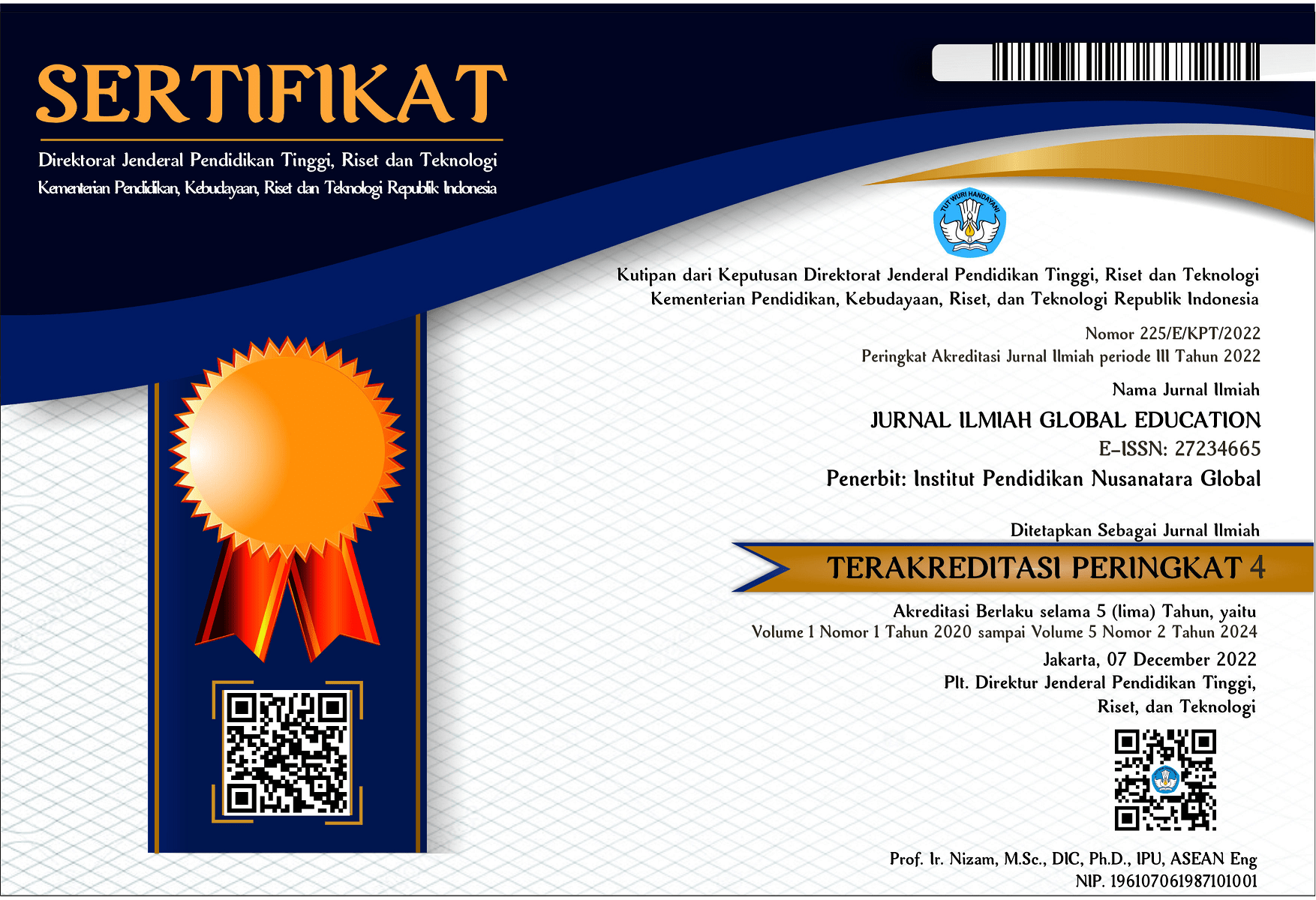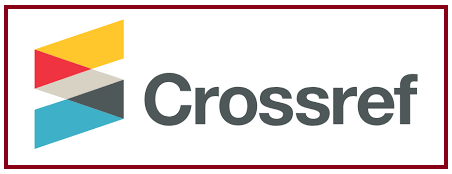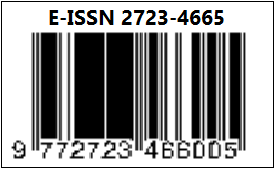THE INFLUENCE OF TECHNOLOGY READINESS AND LEARNING MOTIVATION ON STUDENTS’ PERFORMANCE IN ONLINE LEARNING DURING THE COVID 19 PANDEMIC: A STORY OF INDONESIAN HIGHER EDUCATION STUDENTS
DOI:
https://doi.org/10.55681/jige.v4i1.550Keywords:
Technology Readiness, Learning Motivation, Students’ Performance, Online LearningAbstract
Covid 19 Pandemic has changed the learning process at various levels. Higher education has been changing how it operates in meeting the needs of teaching and learning in the midst of restrictions due to the Covid 19 outbreak. Online learning has become the best option to ensure that the learning process continues while the outbreak remains controlled. Regardless of its flexibility, it is undeniable that many parties in the education system doubt the effectiveness of online learning in assisting students in achieving their learning objectives. This research aimed to scrutinize factors affecting students’ learning effectiveness in online learning. Using online questionnaires distributed to university students across Indonesia, this research found that technology readiness positively influencing learning motivation and students’ performance, and later learning motivation positively influences students’ performance.
Downloads
References
Alkhwaldi & Abdulmuhsin. (2021). Crisis-centric distance learning model in Jordanian higher education sector: Factors influencing the continuous use of distance learning platforms during covid19 pandemic. Journal of international education in business
Arpaci, I. (2015). A comparative study of the effects of cultural differences on the adoption of mobile learning. British Journal of Educational Technology. 46 (4). 699-712)
Ayoub, M. and Aladwan. 2021. The relationship between academic integrity of online university students and its effects on academic performance and learning quality. Journal of Ethics in Entrepreneurship and Technology. DOI 10.1108/JEET-02-2021-0009
Chin, W. W. (1998). Commentary: Issues and Opinion on Structural Equation Modeling. MIS Quarterly, 22(1), vii-xvi.
Dijkstra, T. K., & Henseler, J. (2015). Consistent Partial Least Squares Path Modeling. MIS Quarterly, 39(2), 297-316.
Ferdinand, A. (2011). Metode Penelitian Manajemen Pedoman Penelitian untuk Penulisan Skripsi Tesis dan disertai Ilmu Manajemen. Semarang: Universitas Diponegoro.
Fitri, Y. (2020). The effect of learning motivation and visual aids on student learning achievement. International Journal of Research and Review, 7 (1). 200-207.
Geng, Law, & Niu. (2019). Investigating self-directed learning and technology readiness in blending learning environment. International journal of educational technology in higher education. 16 (17).
Gopal, R., Singh, V., & Aggarwal, A. (2021). Impact of online classes on the satisfaction and performance of students during thee pandemic period. Education and Information Technologies. 26, 6923–6947.
Hair, J. F. J., Huflt, G. T. M., Ringle, C. M., & Sarstedt, M. (2014). A Primer on Partial Least Squares Structural Equation Modeling (PLS-SEM) (1st ed.). Thousand Oaks, CA: Sage.
Hair, J. F. J., Huflt, G. T. M., Ringle, C. M., & Sarstedt, M. (2017). A Primer on Partial Least Squares Structural Equation Modeling (PLS-SEM) (2nd ed.). Thousand Oaks, CA: Sage.
Hair, J. F. J., Risher, J. J., Sarstedt, M., & Ringle, C. M. (2019). When to use and how to report the results of PLS-SEM. European Business Review, 31(1), 2-24. doi:10.1108/ebr-11-2018-0203
Hair, J., R. Anderson, B. Black dan B. Babin. (2016). Multivariate Data Analysis. Pearson Higher Ed.
Henseler, J., Ringle, C. M., & Sarstedt, M. (2014). A new criterion for assessing discriminant validity in variance-based structural equation modeling. Journal of the Academy of Marketing Science, 43(1), 115-135. doi:10.1007/s11747-014-0403-8
Ho, et al., (2020). Students' adoption of e-learning in emergency situation: the case of a viatnamese university during COVID19. Interactive Technology and Smart Education. 18 (2). 246-269
Hulland, J. (1999). Use of partial least squares (PLS) in strategic management research: a review of four recent studies. Strategic Management Journal, 20(2), 195–204.
Law, et al. (2019). Student enrollment, motivation and learning performance in a blended learning environment: The mediating effects of social, teaching, and cognitive presence. Computer & Education 136, 1-12. https://doi.org/10.1016/j.compedu.2019.02.021
Moore, J. L., Dickson-Deane, C., & Galyen, K. (2011). E-learning, online learning, and distance learning environments: Are they the same? Internet Higher Educ, 14(2), 129–135.
Parasuraman A. and Colby C. L., (2014). An Updated and Streamlined Technology Readiness Index: TRI 2.0, Journal of Service Research.
Patton, MQ. (2001). Qualitative Research and Evaluation Methods. (2nd Edition). Thousand oaks, CA: Sage Publications.
Pham, Le, & Do. (2021). The factors affecting students’ online learning outcomes during the COVID-19 pandemic: A Bayesian exploratory factor analysis. Education Research International. 2021.
Rau, P.-L. P., Gao, Q., & Wu, L.-M. (2008). Using mobile communication technology in high school education: Motivation, pressure, and learning performance. Computers & Education, 50(1), 1–22. https://doi.org/10.1016/j.compedu.2006.03.008
Setditjen Dikti, Kemendikbud, (2020). Statistik Pendidikan Tinggi Tahun 2020. Jakarta: Setditjen Dikti, Kemendikbud.
Situmorang, S.H. dan Muslich Lufti. (2012). Analisis Data untuk Riset Manajemen dan Bisnis. Edisi 2. Medan: USU Press.
Soderstrom, N. C., & Bjork, R. A. (2015). Learning versus performance: an integrative review. Perspect Psychol Sci, 10(2), 176-199. https://doi.org/10.1177/1745691615569000
Soderstrom, N.C. and Bjork, R.A. (2015). Learning versus performance. Perspectives on Psychological Science, Vol. 10 No. 2, pp. 176-199, doi: 10.1177/1745691615569000.
Sugiyono. (2015). Metode Penelitian Pendidikan Pendekatan Kuantitatif, Kualitatif, dan R&D. Bandung: Alfabeta.
Tan, C. (2020). The impact of COVID-19 on student motivation, community of inquiry, and learning performance. Asians Education and Development Studies. 10 (2). 308 – 321.
Warden, et al,. (2020). Millennial’s technology readiness and self-efficacy in online class. Innovations in Education and Teaching International. Doi: /14703297.2020.1798269
Wei, H.-C., & Chou, C. (2020). Online learning performance and satisfaction: do perceptions and readiness matter? Distance Education, 41(1), 48-69. https://doi.org/10.1080/01587919.2020.1724768
Widarjono, Agus. (2015). Statistika Terapan, Edisi Pertama. Yogyakarta: UPP STIM YKPN.
Yaseen, et al. 2021. The Effects on Online Learning on Students’ Performance: A Comparison between UK and Jordanian Universities. Paper. https://doi.org/10.3991/ijet.v16i20.24131
Zimmergembeck, M. J., & Locke, E. M. (2007). The socialization of adolescent coping behaviors: Relationship with familied and teachers. Journal of Educational Technology & Society. 8 (2). 107 – 117.
Downloads
Published
How to Cite
Issue
Section
License
Copyright (c) 2023 JURNAL ILMIAH GLOBAL EDUCATION

This work is licensed under a Creative Commons Attribution-ShareAlike 4.0 International License.













